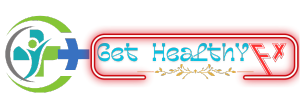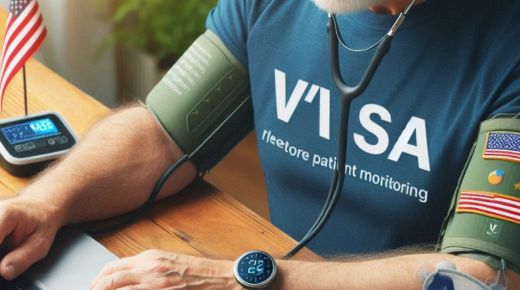Veteran care is at a pivotal juncture, embracing the benefits of technology to enhance the lives of those who have served. One of the emerging innovations in this field is VA Remote Patient Monitoring. As veterans return to civilian life, they often face challenges related to physical health, mental well-being, and accessibility to healthcare. Traditional healthcare settings may not always offer the flexibility or immediacy that veterans need. This is where remote patient monitoring comes into play, aiming to provide timely, efficient, and comprehensive care solutions.
Understanding VA Remote Patient Monitoring
VA Remote Patient Monitoring is a system designed to help track veterans’ health from a distance using digital technologies. This approach enables healthcare providers to monitor medical conditions like diabetes, hypertension, heart disease, and more without requiring veterans to make frequent trips to healthcare facilities. This is particularly valuable for those living in rural areas or who find travel cumbersome.
Enhanced Accessibility and Convenience
One of the principal advantages of VA Remote Patient Monitoring is its ability to enhance accessibility and convenience. Veterans can engage with healthcare providers through telehealth services, limiting the need for in-person visits. With advancements like wearable technology and mobile health apps, veterans can easily track their health metrics such as heart rate, blood pressure, or glucose levels. This data is then remotely transmitted to healthcare providers, who can make informed decisions regarding their care.
Improved Health Outcomes
The implementation of VA Remote Patient Monitoring is not only about convenience but also about improving health outcomes. Regular monitoring helps detect health issues early, allowing for prompt intervention. This continuous collection of accurate health data leads to better patient engagement, medical recommendation adherence, and healthier veteran populations. For instance, veterans with chronic diseases can maintain regular communication with healthcare professionals, adjusting treatment plans based on real-time data.
Reducing Hospital Admissions and Readmissions
Hospital admissions and readmissions have long been a concern for healthcare systems, leading to increased costs and resource allocation issues. VA Remote Patient Monitoring has the potential to reduce these numbers by catching deterioration in a patient’s condition before it necessitates a hospital visit. By managing health proactively, remote monitoring aids in reducing the strain on hospital facilities, allowing for better resource use.
The Role of Technology and Innovation
The technology behind VA Remote Patient Monitoring encompasses many tools such as sensors, smartphones, and dedicated health apps. These tools collect and transmit data to healthcare professionals. Automated alerts and reminders often complement the system, ensuring that veterans and care providers are attentive to necessary health actions. Additionally, technological advancements are making these systems more user-friendly, ensuring veterans of all ages can comfortably use them.
Addressing the Challenges
While VA Remote Patient Monitoring promises substantial benefits, it also presents challenges that need addressing. Data security, connectivity problems in rural areas, and digital literacy among veterans must be considered. To ensure effective implementation, healthcare providers must focus on robust security protocols to protect patient information. Furthermore, efforts to enhance veterans’ digital skills can prevent disparities in access to care.
Collaborative Care Models
An essential component of successful VA Remote Patient Monitoring is the collaborative care model it helps facilitate. Physicians, nurses, and other healthcare professionals can collaborate seamlessly, sharing information and developing comprehensive care plans. This team-based approach can be particularly beneficial for managing complex health issues, ensuring that veterans receive holistic, coordinated care.
Policy Implications and Support
The evolution of VA Remote Patient Monitoring requires supportive policies that encourage adopting and refining these technologies. Funding for technological infrastructure, training programs for healthcare professionals, and initiatives to increase veteran awareness about remote monitoring options are crucial. Government agencies and veteran organizations must collaborate to advocate for policies that bridge the gap between technology and healthcare.
Real-World Applications and Success Stories
Numerous success stories demonstrate the efficacy of VA Remote Patient Monitoring. Veterans with chronic conditions report feeling more in control of their health and experiencing fewer emergencies. The technology also facilitates faster recovery and improved quality of life, as veterans actively participate in managing their health. These stories highlight the transformative potential of remote monitoring and suggest that widespread adoption could significantly enhance veteran care.
Looking to the Future
The future of veteran care through VA Remote Patient Monitoring appears promising, with a trajectory toward more personalized and efficient healthcare solutions. As technology advances, the capabilities of remote monitoring systems will continue to expand. We can anticipate developments in predictive analytics, enabling providers to foresee potential health issues and intervene before they escalate. Integration with other health technologies may offer a more seamless healthcare experience.
The possibilities are endless, and with continued innovation and support, VA Remote Patient Monitoring could revolutionize how we care for our veterans. Overall, VA Remote Patient Monitoring has become essential in providing high-quality, accessible healthcare to our nation’s heroes. Its potential for improving health outcomes, increasing convenience and accessibility, and reducing healthcare costs make it a valuable addition to veteran care services. As technology advances and policies evolve to support its implementation, VA Remote Patient Monitoring will undoubtedly continue transforming veteran healthcare for the better.
Conclusion
In summary, VA Remote Patient Monitoring DocVA represents a groundbreaking advancement in veteran healthcare. Integrating technology into the care continuum provides a pathway to more accessible, effective, and comprehensive care. This model supports improved health outcomes for veterans and streamlines healthcare delivery, making it more sustainable for the future.
As we continue to explore and refine these innovations, we inch closer to a healthcare system that honors the sacrifices of veterans by offering the highest standard of care possible. So, the future of veteran care looks brighter than ever with VA Remote Patient Monitoring at its core. Let’s continue to strive for better health outcomes and an improved quality of life for our veterans through innovative solutions like remote monitoring. Undoubtedly, technology will play a crucial role in shaping the future of healthcare, and it’s time we fully embrace its potential to enhance the lives of those who have served our country.

